 The Judge
The Judge
Starring Robert Downey Jr., Robert Duvall, Vera Farmiga, Billy Bob Thornton, and Vincent D'Onofrio
Directed by David Dobkin
Rated R
Run Time: 141 minutes
Genre: Drama
Opens October 10th
By Eric Forthun of Cinematic Shadows
The Judge uses the star power of Robert Downey Jr. and Robert Duvall to tell the character-driven story of a father-son duo reunited to save the future of their relationship. Coming at 141 minutes, the film becomes an overlong, repetitive journey into the heart of a man that was ravaged by a busy, overbearing father in his past and must accept that he is his father's only hope at having another chance at life. Courtroom dramas often rely heavily on the unique nature of their cases and the twists that arise from the developments and reveals on the stand, but The Judge pushes those proceedings aside and emphasizes the family drama at the heart of the film to occasionally effective results. There's a subtlety to the two lead performances and a handful of supporting gems that elevate the cliché-driven narrative, yet the film never builds up momentum and fills in the empty voids of storytelling with other trite plot points that feel all too familiar in an already worn out sub-genre.
Hank Palmer (Robert Downey Jr.) is a big-time lawyer living away from his small-town home. He mostly defends people known for being guilty of their crimes and feels confident in his work, despite struggles both at and away from home. Him and his wife are estranged after she cheated on him and their daughter, Lauren (Emma Tremblay), will soon be caught in the mix. For the time being, though, Hank must attend to his mother's death in a return to middle America and a small town that he wanted to keep in his past. He runs into his old fling, Samantha (Vera Farmiga), who runs a diner and seems to be living well while he avoids his renowned judge of a father, Joseph (Robert Duvall), like the plague. They don't get along since they disagreed on many things while they were younger, namely how to respect one another and deal with the others' foolish actions. One of those involves Hank and his brother, Glen (Vincent D'Onofrio), who used to play great baseball but injured his arm in a car accident while Hank was driving.
The incident that keeps Hank in town, though, is the arrest of Joseph on the count of murder. This reverses the playing field for a man that has judged others for crimes for the past forty years and must reconcile with the fact that he possibly killed a man he previously convicted. Joseph cannot stand the thought of Hank representing him and this creates a further divide, particularly as new details emerge about Joseph in his fragile state. The family drama that forms the heart of the film is undoubtedly inspiring and driven by emotional truths. There's something to be said about a mainstream, major studio-backed drama that recalls old Hollywood techniques and employs such visual reminiscences of classic studio films and does it with a serio-comedy feel. Inherently, though, what derives from such dependence on old material is predictability, since the narrative offers no true surprises and instead relies on big, dramatic moments to tell the audience when to feel something. A few intimate scenes arise, particularly between Downey Jr.'s Hank and Jeremy Strong's Dale, as their brotherly relationship prospers with Strong's affecting performance.
Robert Downey Jr. is magnetic on screen and stands as one of the only stars in the business today, and countering him with a legend like Robert Duvall brings out two powerful performances at the heart of the film. Yet like most Hollywood dramas, a big dramatic development happens halfway through the film and undermines the severity of the dilemma being addressed. I won't mention it for fear of spoiling, but it simplifies a complex issue that affects many people. Too many subplots pop up and fail to close out during the film, most involving Carla (Leighton Meester) and Farmiga's Samantha as love interests that drastically impact Hank's life. And lest I forget that the always appealing Billy Bob Thornton is used as a bland, intelligent prosecutor that has one quirk to define him as a person but mostly stands as an enigma to threaten Hank and his family. For every strong actor and character that attempts to emerge in The Judge, the story bogs itself down in exaggerated melodrama and lessens its impact. What could be a promising, intuitive drama about family life instead becomes overdone and unfulfilling.

 Kill the Messenger
Kill the Messenger
 Alexander and the Terrible, Horrible, No Good, Very Bad Day
Alexander and the Terrible, Horrible, No Good, Very Bad Day
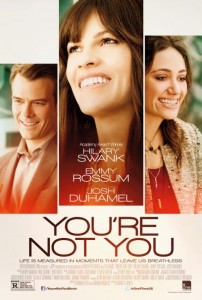 You're Not You
You're Not You
 #Stuck
#Stuck
 The Blue Room
The Blue Room
 Automata
Automata
 Meet the Mormons
Meet the Mormons
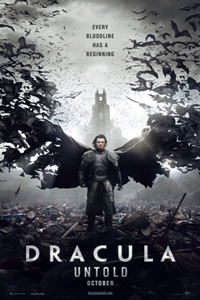 Dracula Untold
Dracula Untold
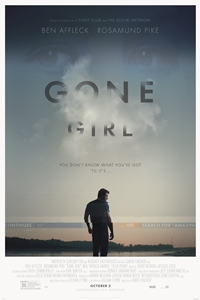 Gone Girl
Gone Girl
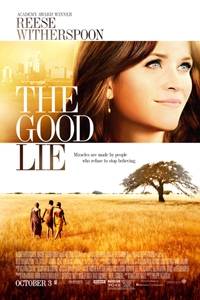 The Good Lie
The Good Lie
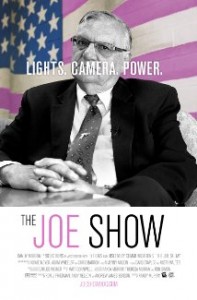 The Joe Show
The Joe Show
 Left Behind
Left Behind








